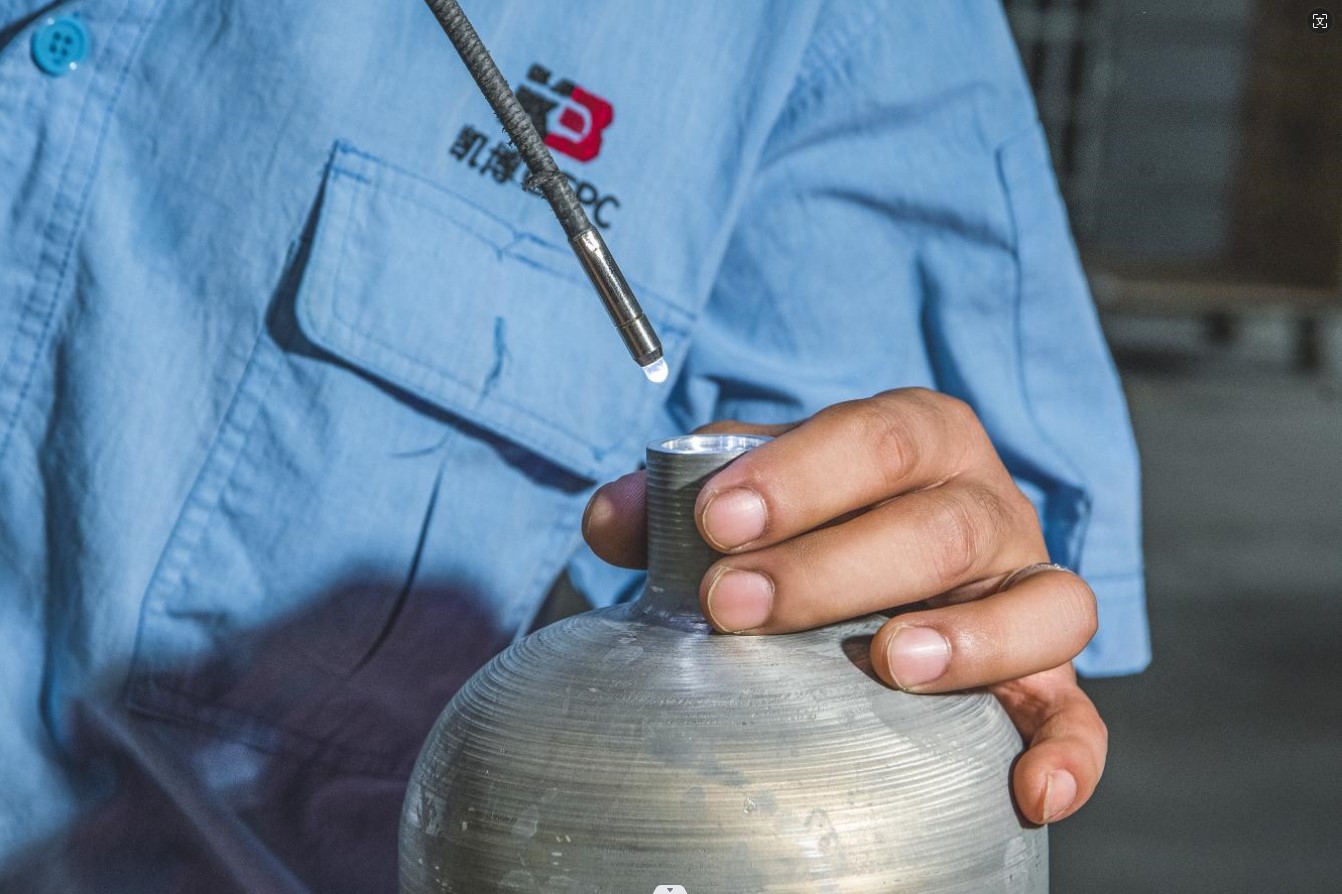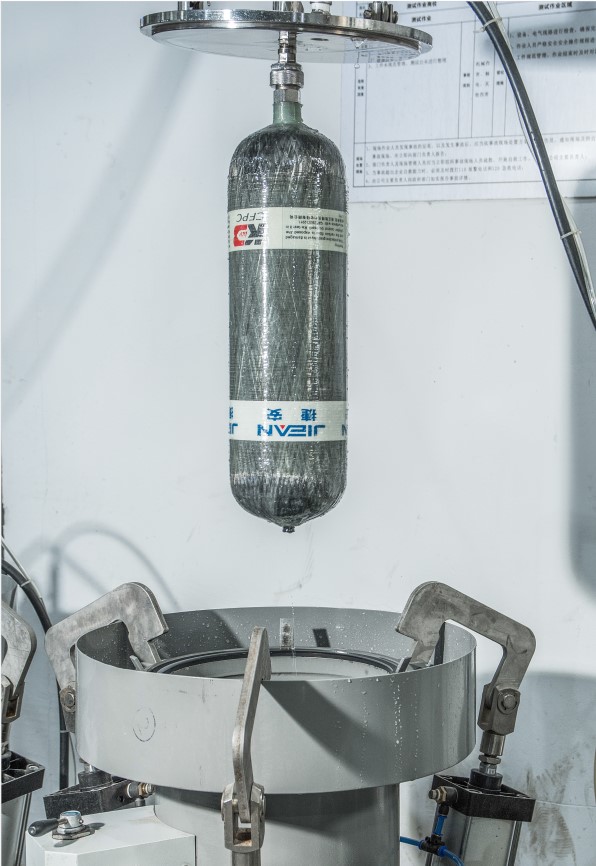Carbon fiber wrapped cylinders, widely used in various applications such as SCBA (Self-Contained Breathing Apparatus) systems, paintball, and even medical oxygen storage, provide superior strength, durability, and weight advantages. However, like all pressurized gas cylinders, they require regular inspection and testing to ensure safety and proper functionality. One critical test for these cylinders is hydrostatic testing. This article explores the hydrostatic testing requirements for carbon fiber wrapped cylinders, why they are necessary, and how they help maintain safety and performance.
What Is Hydrostatic Testing?
Hydrostatic testing is a method used to verify the structural integrity of pressurized cylinders. During the test, the cylinder is filled with water and pressurized to a level higher than its normal operating pressure. This process checks for leaks, deformations, and other signs of weakness that could compromise the cylinder’s ability to safely hold gas under pressure. Hydrostatic testing is a vital part of ensuring that cylinders are safe for continued use, especially when they are exposed to wear and tear over time.
How Often Are Carbon Fiber Wrapped Cylinders Tested?
Carbon fiber wrapped cylinders have specific testing intervals mandated by safety regulations and standards. The frequency of hydrostatic testing depends on the material, construction, and the application for which the cylinder is used.
For carbon fiber wrapped cylinders, such as those used in SCBA systems or paintball, the general rule is that they must be hydrostatically tested every five years. This timeline is regulated by the Department of Transportation (DOT) in the U.S. and similar regulatory bodies in other countries. After testing, the cylinder is stamped or labeled with the date, ensuring users know when the next test is due.
Why Regular Hydrostatic Testing Is Important
Ensuring Safety
The most crucial reason for hydrostatic testing is safety. Over time, pressurized cylinders can degrade due to environmental factors, repeated use, and exposure to impact. Carbon fiber cylinders, while lightweight and strong, are not immune to wear. Regular testing helps identify any potential weaknesses in the cylinder walls, such as cracks, leaks, or structural deformations, which could lead to a dangerous failure if left unchecked.
Compliance with Regulations
Hydrostatic testing is not just a safety precaution; it’s also a legal requirement. Cylinders that are used in applications such as SCBA systems must meet strict safety standards, and failing to conduct regular testing can result in penalties and the inability to use the equipment. Regular testing ensures that all safety regulations are met, providing peace of mind for users and operators.
Extending Cylinder Life
Regular testing also helps extend the life of carbon fiber wrapped cylinders. By identifying and addressing minor issues early, owners can prevent more significant problems that could result in the cylinder needing to be retired early. A well-maintained cylinder, with regular hydrostatic testing, can often be used for many years without any safety concerns.
The Hydrostatic Testing Process for Carbon Fiber Cylinders
The hydrostatic testing process for carbon fiber wrapped cylinders is straightforward but thorough. Below is a step-by-step overview of how the process typically works:
- Visual Inspection: Before testing, the cylinder is visually inspected for any obvious signs of damage, such as scratches, dents, or corrosion. If any severe damage is found, the cylinder may be disqualified from testing.
- Water Filling: The cylinder is filled with water, which helps to safely distribute the pressure during the test. Unlike air, water is incompressible, making it safer to test with.
- Pressurization: The cylinder is then pressurized to a level that is higher than its normal operating pressure. This increased pressure is meant to simulate extreme conditions to check for any potential weaknesses.
- Measurement: During pressurization, the cylinder is measured for any expansion or deformation. If the cylinder expands beyond a certain limit, it may fail the test, indicating that it cannot safely hold the required pressure.
- Inspection and Certification: If the cylinder passes the test, it is dried, inspected again, and stamped or labeled with the test date and results. The cylinder is now certified for continued use until the next testing period.
Carbon Fiber Composite Cylinders and Testing Considerations
Carbon fiber composite cylinders have distinct characteristics that make them ideal for high-pressure applications, but these features also influence their testing requirements:
- Lightweight: The primary advantage of carbon fiber cylinders is their weight. These cylinders are much lighter than steel or aluminum, making them easier to handle and carry. However, the composite nature of the material requires more careful inspection to ensure there is no hidden damage beneath the surface layers.
- Strength and Durability: Carbon fiber cylinders are designed to withstand high pressure, but this doesn’t mean they are immune to damage. Over time, the cylinders may experience micro-cracks, delamination, or weakening of the resin bonding, which can only be detected through hydrostatic testing.
- Longevity: With proper care, carbon fiber cylinders can last for 15 years or more. However, regular hydrostatic testing is essential to monitor their condition and ensure they remain safe throughout their service life.
Conclusion
Hydrostatic testing of carbon fiber wrapped cylinders is a critical safety measure that ensures these high-pressure vessels remain reliable and functional. By conducting regular testing every five years, users can prevent potential accidents, comply with legal regulations, and extend the service life of their cylinders. Carbon fiber composite cylinders offer significant advantages in terms of weight and strength, but like any pressurized system, they require careful monitoring and maintenance. Through hydrostatic testing, the safety and performance of these cylinders can be guaranteed, providing peace of mind in applications ranging from firefighting to recreational sports.
In short, understanding the importance of hydrostatic testing and adhering to the recommended testing intervals is key to maximizing the lifespan and safety of carbon fiber wrapped cylinders.
Post time: Sep-11-2024


